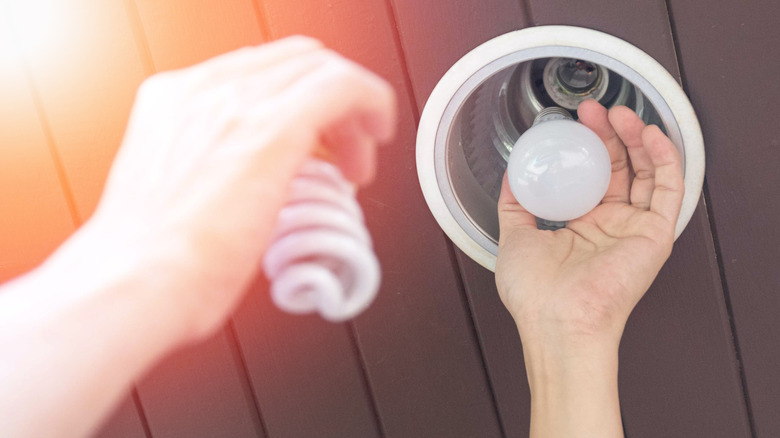Make The Switch From Incandescent Light Bulbs With These Energy-Efficient Alternatives
The United States has taken a commendable step toward promoting energy efficiency and combating climate change by enforcing a ban on incandescent light bulbs as of August 1, 2023. This highlights the country's commitment to reducing energy consumption and carbon emissions. However, households that have grown accustomed to the warm, traditional bulbs face the challenge of finding appropriate alternatives that provide the same quality of lighting while promoting energy savings.
Fortunately, there's no need to stumble in the dark while searching for solutions. Not only are there several options that are better for the environment, but they often last longer and use less energy, which ultimately saves you money on your bills. Of course, it's important to consider the pros and cons of each type of light bulb before making the switch. Then you can make the best choice for your home that sets you on your way to a brighter and more sustainable future, sans incandescent bulbs.
Exploring energy-efficient options
In the switch from incandescent light bulbs, there are several energy-efficient alternatives to consider. For one, compact fluorescent lamps, or CFLs, can be used in standard light fixtures and, as of now, are still being manufactured. This said, the White House aims to phase out CFLs as well by 2025. Also, with CFLs, it should be noted that they may take a moment to reach full brightness, may not emit the warmest light, and contain mercury, so proper disposal is required.
Using light-emitting diodes, LED bulbs are another energy-efficient option. These bulbs come with a long lifespan, work with dimmer switches, and are safer for the environment than traditional light bulbs or CFLs. They're instant-on lights and offer a wide range of color temperatures to suit various environments. Although LEDs are pricier at first, their long lifespan and energy efficiency make up for the higher initial cost.
Halogen incandescent bulbs, meanwhile, use halogen gas to improve efficiency compared to traditional incandescents. They offer instant full brightness and natural light but consume more energy and have a shorter lifespan than CFLs and LEDs. While a step in the right direction, they may not be as environmentally friendly as other options.
Making the transition
If you have a stash of incandescent bulbs even after the ban, you'll be happy to know that you can still use them. The ban only affects production and imports, so you're good to go with the ones you have in the house. It's also worth noting that there are exceptions to the ban for specialty bulbs used in appliances, certain decorative lighting, and other specialized applications, which means you can still find suitable lighting options for all your needs.
When it comes to light bulbs, it is important to assess the lighting needs of each room in your home to determine which option will work best. Make sure to check if your current fixtures are compatible with the new bulbs you're considering. For example, some types of light switches may not work well with certain bulbs. You can also experiment with different color temperatures to find the lighting that suits you best.


